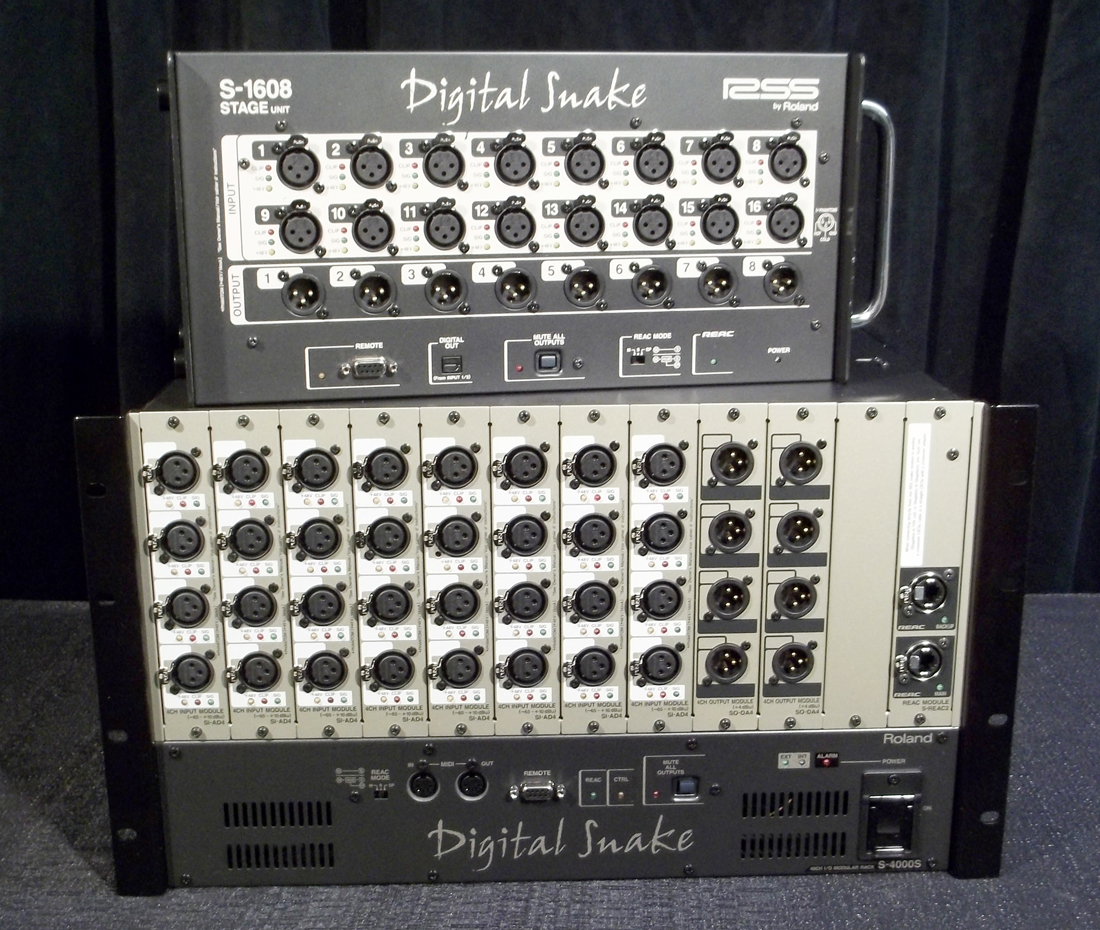
Snakes & Cables
It was time to set up the digital snake systems and see how they all fit together.
I started with the smaller S-1608 box, which is well built and can be rack-mounted or used as a stand-alone floor box. A large handle at one end makes it easy to move around.
The S-1608 offers 16 XLR inputs and 8 XLR outputs.
Each input comes with an amber LED showing phantom power status, a green LED for signal, and a red LED for clip.
A master power LED and REAC LED let you know the status of the box at a glance.
Controls include a REAC mode switch to configure the system, and a “mute all inputs” switch that I thought was a handy feature until it was accidentally pressed when plugging in a cable at a gig.
I had forgotten the button was there, and spent a few minutes trying to figure out why I could not get signal from the box to the console.
Next up was the larger S-4000S rack-mountable digital snake head, which arrived in the typical configuration of 32 XLR inputs and 8 XLR outputs. It offers remote controllable mic preamps and redundant Ethernet ports as well as the same features as the S-1608. It’s 6RU and weights 37.8 pounds, and it’s modular package lets you configure the system exactly the way you need it.
Roland also provided some W100S-R reels, each with 100 meters (328 feet) of Cat-5e cable outfitted with etherCON connectors while weighing just over 11 pounds. I’m a big fan of cable reels and have a bunch of various sized reel systems in my inventory, so I don’t say lightly that the W100S-R is a very good reel, and the cable is rugged yet flexible.
Note that the third available stage box, the S-0816, wasn’t supplied for this evaluation. It’s essentially a handy “front of house” box that could be used with the S-1608 to make a simple 16 input x 8 output point to point snake system.
In The Field
The first gig I deployed the package was a small meeting with a few podium mics and some wireless systems, as well as music playback from my laptop. I plugged the laptop into the stereo RCA jacks on the console and used the console inputs for the wireless units.
The S-1608 was positioned near the stage, used it to run the podium mics back to the console and the console’s main outputs to my amplifier rack for the loudspeakers. Running the Cat-5 snake was way easier and quicker as compared to my analog audio snakes, and Steve, the A2 at the event, had never even seen the console before but within minutes had all of the basics figured out without looking at the manual.
The next gig was a larger corporate event that included a lot of video and computer playback. During a run through I noticed that the audio track in one feed from video world was not in sync with the video portion shown on the screens. I carry a small digital delay I can patch in just for situations like these, but with a digital delay on every input and output in the console, it was easy to add the required amount of delay and line up the words with the lips on screen.


